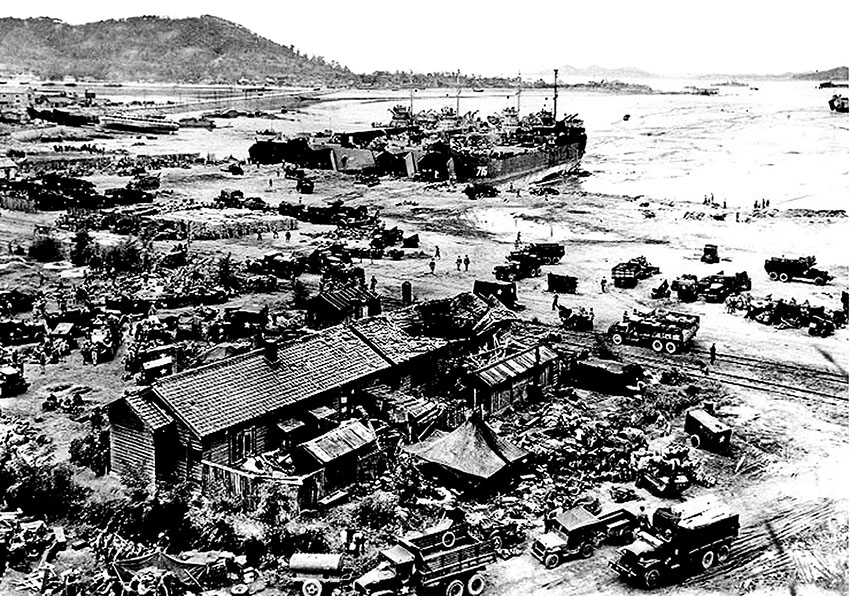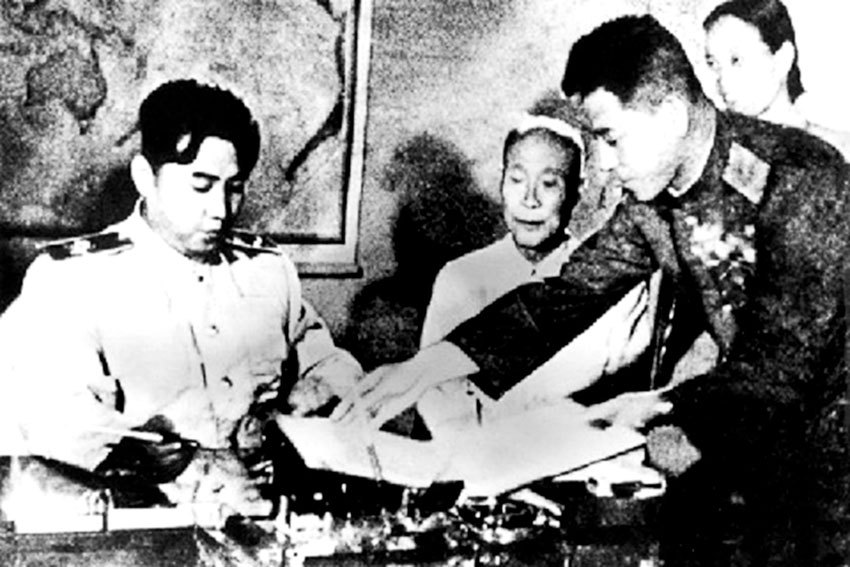DOWNLOAD
1950

June North Korea invades South Korea. President Harry S. Truman responds by ordering U.S. military support to Korea. Psychological Warfare Branch, Far East Command, drops the first leaflets and makes the first radio broadcasts within four days of the attack. These first leaflets target the South Korean civilian population, telling them that help is on the way.

August-September Driving southward, North Korean forces capture Pohang (6 September), but fail to push Republic of Korea Army (ROKA), Eighth U.S. Army (EUSA) and UN forces from the Pusan Perimeter and off the peninsula.
September General (GEN) Douglas A. MacArthur named Brigadier General (BG) Crawford F. Sams as the Chief of Health and Welfare, General Headquarters, United Nations Command, Republic of Korea. BG Sams sets up the UN Public Health and Welfare Detachment, 8201st Army Unit, which is the genesis of the main U.S. Army Civil Affairs (CA) effort in the Korean War.
15 September UN Forces under the command of GEN Douglas A. MacArthur make an amphibious landing at Inch’on and begin sweeping east across the peninsula, in conjunction with the EUSA breakout north from the Pusan Perimeter.

26 September GEN Douglas A. MacArthur announces the liberation of Seoul.
October The Tactical Information Detachment (TID), the U.S. Army’s only tactical Psywar unit, is rushed from Fort Riley, Kansas, to Korea. It arrives in Pusan on 15 October. GEN MacArthur transfers responsibility of the UN Public Health and Welfare Detachment to EUSA.
1 October U.S. forces cross the 38th Parallel two days after ROKA forces.
15 October President Truman and GEN MacArthur meet at Wake Island to discuss the prospects of an expanded war and Soviet or Chinese intervention.
20-21 October UN forces capture P’yongyang. UN Civil Assistance (CA) teams begin a military government and reconstruction role at P’yongyang, and the port city of Chinnamp’o. The X Corps CA effort at Wonsan, Hamhung, and Hungnam is initiated by MG Edward M. Almond.
26 October UN forces reach the Yalu River.
November On 4 November, the TID is redesignated as the 1st Loudspeaker and Leaflet Company, the EUSA tactical Psywar element. Chinese Communist Forces (CCF) infiltrate North Korea and attack UN forces on both sides of the peninsula. Surprised by the Communist offensive, CA teams begin evacuating wounded ROKA soldiers and North Korean civilians supporting the UN from P’yongyang, and the ports of Chinnamp’o, Wonsan and Hungnam.
1951
January Secretary of the Army Frank Pace, Jr., names BG Robert A. McClure to be the Chief of Psychological Warfare (CPW). The UN Public Health and Welfare Detachment, is first designated the UN Civil Assistance Command (UNCAC), and then renamed the UN Civil Assistance Command, Korea (UNCACK), 8201st Army Unit (AU).
April The Department of the Army approves the activation of the 1st Radio Broadcasting and Leaflet Group (1st RB&L), 2nd Loudspeaker and Leaflet (L&L) Company, 5th L&L Company, and 301st RB&L Group.
June In the UN Security Council, Soviet Representative Jacob Malik proposes a cease-fire and armistice along the 38th Parallel, which is accepted in principle three days later by U.S. Secretary of State Dean Acheson. To prepare for peace negotiations, a neutral zone is established around Kaesong, the agreed-upon meeting site.
July U.S. Air Force aircraft drop the first propaganda leaflets on Communist troops manning static positions. The first contingent of the 1st RB&L arrives in Japan to perform strategic Psywar functions.
July-August UN Commissioners and North Korean representatives meet at Kaesong to negotiate the agenda for Armistice negotiations. Initial talks break down over Communist allegations of Kaesong neutral zone violations.
August-September The 4th Mobile Radio Broadcasting Company (MRBC) establishes Radio Pusan in Korea. The 1st RB&L takes responsibility for Radio Tokyo and the Voice of the UN Command (VUNC).
October Greece and Turkey join NATO. Of the thirteen NATO nations having armed forces, only Portugal does not send troops to the UN Command in Korea. Peace talks resume at a newly erected conference facility at Panmunjom. Establishing a Military Demarcation Line (MDL) between North and South Korea is the first order of business.
November The 4th MRBC establishes Radio Seoul.
1952
April The U.S. Army Psychological Warfare Center, comprised of the Psychological Warfare School, Psychological Warfare Board, 6th RB&L Group, and 10th Special Forces Group (SFG), is established at Fort Bragg, NC.
1953

July Delegates from North and South Korea and the United Nations sign an armistice ending hostilities, and create a four-kilometer wide demilitarized zone (DMZ) between Communist and UN forces along the 38th Parallel. Each side withdraws two kilometers from the Military Demarcation Line. Despite reaching a cease-fire, tensions remain high on both sides. UNCACK is disbanded, and reformed as the Korea Civil Assistance Command (KCAC), 8201st Army Unit (AU).
